 Research Article
Research Article
Are Computer-Controlled, Pressure Modulated Knee Rehabilitation Machines Valuable Following Knee Arthroplasty?
Paul J Roubalk1* and D Carl Freeman2
1Physical Therapy Specialists, Troy, USA
2Department of Biological Sciences, USA
Paul J Roubal, Physical Therapy Specialists, Troy, MI, USA.
Received Date: December 14, 2018; Published Date: December 17, 2018
Abstract
Background: To determine if a patented new computer controlled, pressure modulated knee rehabilitation machine was more effective, in rehabilitation of total knee arthroplasty, than the continuous passive motion machine utilizing Cochrane Review data.
Methods: Prospective study of 197 patients: 59 outpatient rehabilitation facilities; 155 homebased care, and 7 skilled nursing facilities. Patients were prospectively treated with pressure modulated knee rehabilitation and standard rehabilitation for total knee arthroplasty. Range of motion (RoM) was compared (via ANOVA) with the Cochrane continuous passive motion study. We also evaluated RoM outcomes versus start day of pressure modulated knee rehabilitation use.
Findings: Pressure modulated knee rehabilitation patient’s ROM, at 30 days, exceeded 116°; significantly greater than all shortterm (6 weeks) Cochrane Review studies (83°). Patients using the pressure modulated knee rehabilitation six or more days after surgery had a significantly lower 14-day RoM than patients who began on days 1-5 following surgery.
Interpretation: The pressure modulated knee rehabilitation patients increase their RoM following total knee arthroplasty significantly more than continuous passive motion users.
Keywords: Knee Arthroplasty Total; Knee Joint; Rehabilitation; Recovery of Motion; Range of Motion.
Introduction
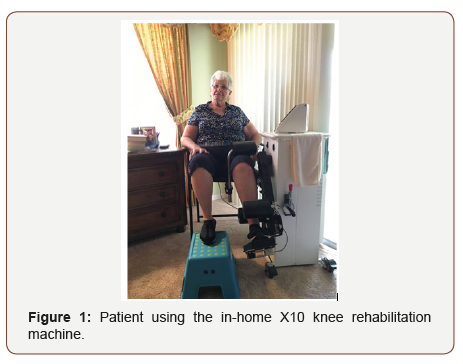
What is sam?
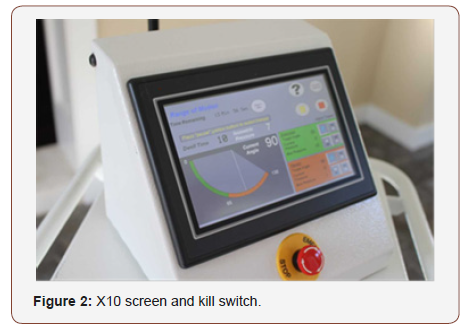
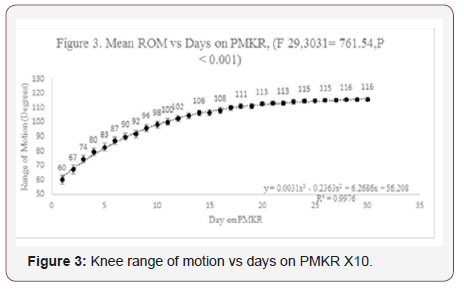
ZetrOZ – Long Duration Low Intensity Therapeutic Ultrasound Device
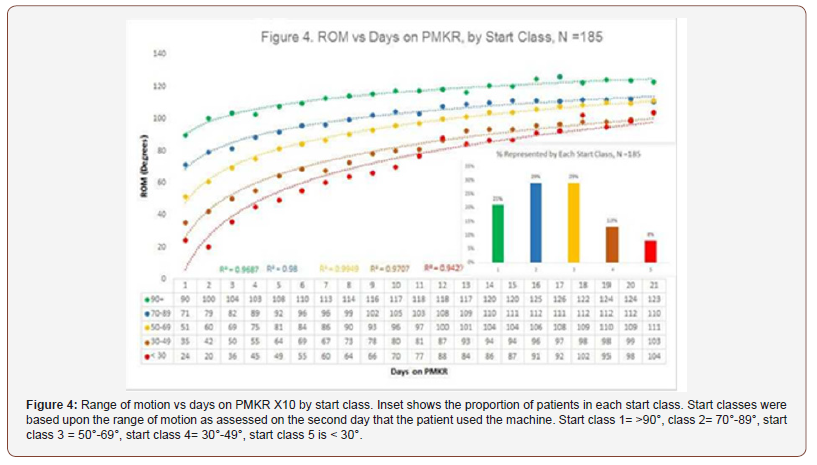
Schedule of Assessments
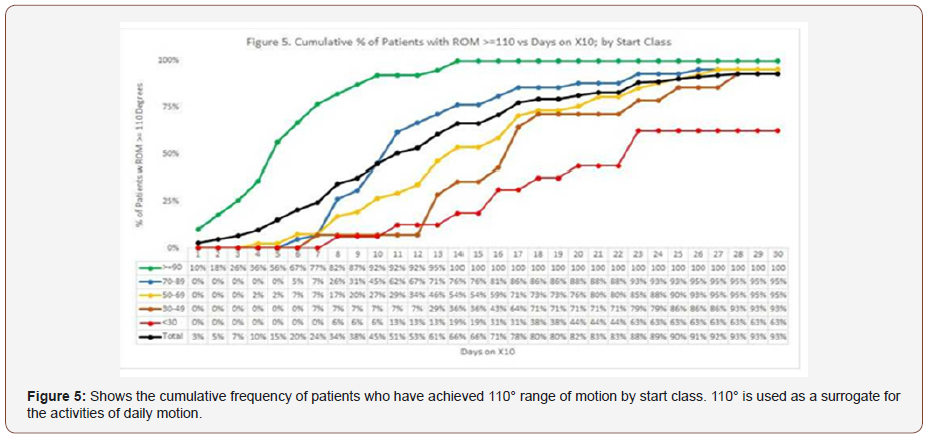
Past Research
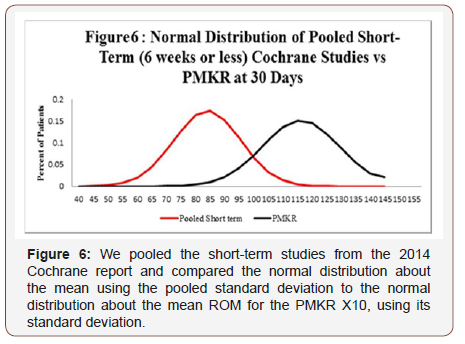
<
Placement of Applicators on Study Subjects
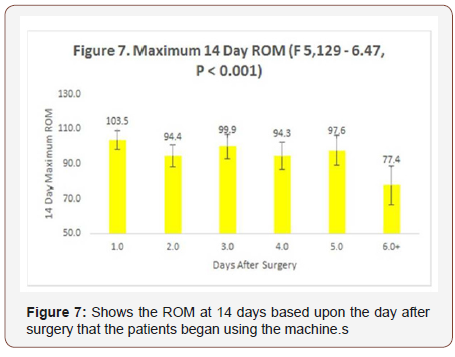
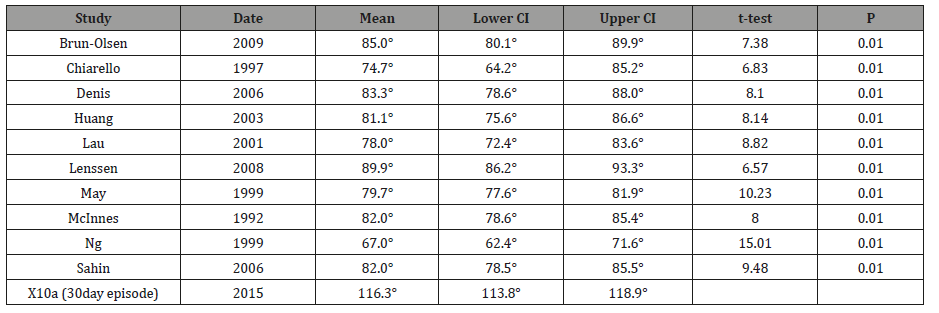
Acknowledgement
1. Study Funded by: ZetrOZ, Inc.
2. ZetrOZ, Inc. is the manufacturer of sam®.
Conflict of Interest
No Conflict of Interest.
References
- Beaupre LA, Davies DM, Jones CA, Cintas JG (2001) Exercise combined with continuous passive motion or slide board therapy compared with exercise only: A randomized controlled trial of patients following total knee arthroplasty. Phys Ther 81(4): 1029-1037.
- Bruun-Olsen V, Heiberg KE, Megshoel AM (2009) Continuous passive motion as an adjunct to active exercised in early rehabilitation following total knee arthroplasty - a randomized controlled trial. Disabil Rehabil 31 (4): 277-283.
- Lenssen TAD, van Steyn MJA, Crijns YHF, Waltje EMH, Roox GM, et al. (2008) Effectiveness of prolonged use of continuous passive motion (CPM) as an adjunct to physiotherapy, after total knee arthroplasty. BMC Musculoskeletal Disorders 9: 60.
- Ritter MA, Gandolf VS, Holston KS (1989) Continuous passive motion versus physical therapy in total knee arthroplasty. Clin Orthop Relat Res 244: 239-243.
- Shakespeare DT, Stokes M, Sherman KP,Young A (1985) Reflex inhibition of the quadriceps after meniscectomy: lack of association with pain. Clin Physiol 5(2): 137-144.
- O Driscoll SW, Giori NJ (2000) Continuous passive motion (CPM): Theory and principles of clinical application. J Rehabil Res Dev 37(2): 179-188.
- Morris J (1995) The value of continuous passive motion in rehabilitation following total knee replacement. Physiotherapy 31(9): 557-562.
- Denis M, Moffet H, Caron F, Oullet D, Paquet J, et al. (2006) Effectiveness of continuous passive motion and conventional physical therapy after total knee arthroplasty: a randomized clinical trial. Phys Ther 86(2): 174-185.
- Mc Carthy MR, O Donoghue PC, Yates CK, Yates McCarthy JL (1992) The clinical use continuous passive motion in physical therapy. J Orthop Sports Phys Ther 15(3): 132-140.
- Chiarello CM, Gundersen L, O’Halloran T (1997) The effect of continuous passive motion duration and increment of range of motion in total knee arthroplasty patients. J Orthop Sports Phys Ther 25(2): 119-127.
- Frank C, Akeson WH, Woo SLY, Dmiel D, Ing D, et al. (1984) Physiology and therapeutic value of passive joint motion. Clin Orthop Relat Res 185: 113-125.
- Bible JE, Simpson A K, Biswas D, Pelker RR, Grauer JN (2009). Actual Knee Motion during Continuous Passive Motion Protocols is Less Than Expected. Clin Orthop Relat Res 467(10): 2656-2661.
- Ghani H, N Maffulli, V Khanduja (2012) Management of stiffness following total knee arthroplasty: A systematic review. Knee 19(6): 751- 759.
- Werner BC, Carr JB, Wiggins JC, Gwathmy FW, Browne JA (2015) Manipulation under anesthesia after total knee arthroplasty is associated with an increased incidence of subsequent revision surgery. J Arthroplasty 30(9suppl): 72-75.
- Moffet H, Collet JP, Shapiro SH, Paradis G, Marquis F, et al. (2004) Effectiveness of intensive rehabilitation on functional ability and quality of life after first total knee arthroplasty: a single-blind randomized controlled trial. Arch Phys Med Rehabil 85(4): 546-556.
- Walsh M, Woodhouse LJ, Thomas SG, Finch E (1998) Physical impairments and functional limitations: a comparison of individuals 1 year after total knee arthroplasty with control subjects. Phys Ther 78(3): 248-258.
- Ventline BD, C Freeman, JD De Claire (in review) The Pressure Modulated Knee Recovery Machine vs. Passive Continuous Passive Machine in Early Post-Surgical Knee Rehabilitation Following Replacement: A Retrospective Study” J. of Arthroscopy
- Harvey LA, Brosseau L, Herbert RD (2014) Continuous passive motion following total knee arthroplasty in people with arthritis. Cochrane Database Syst Rev 2: CD004260.
- Ebert JR, Munsie C, Joss B (2014) Guidelines for the early restoration if active knee flexion after total knee arthroplasty: implications for rehabilitation and early intervention. Arch Phys Med Rehabil 95(6): 1135-1140.
- Holm B, Kristensen MT, Bencke J, Husted H, Kehlet H, et al. (2010) Loss of knee-extension strength is related to knee swelling after total knee arthroplasty. Arch Phys Med Rehabil 91(11): 1770-1776.
- Meier W, Minzer RL, Marcus RL, Dibble LE, Peters C (2008) Total knee arthroplasty: muscle impairments, functional limitations, and recommended rehabilitation approaches. J Orthop Sports Phys Ther 38(5): 246-256.
- Moffet H, Collet JP, Shapiro SH, Paradis G, Marquis F, (2004) Effectiveness of intensive rehabilitation on functional ability and quality of life after first total knee arthroplasty: A single-blind randomized controlled trial. Arch Phys Med Rehabil 85(4): 546-556.
- Stevens Lapsley JE, Balter JE, Kohrt WM, Eckhoff DG (2010) Quadriceps and hamstrings muscle dysfunction after total knee arthroplasty. Clin Orthop Relat Res 468(9): 2460-2468.
- Zhou Z, Yew KS, Arul E, Chin PL, Tay KJ (2015) Recovery in knee range of motion reaches a plateau by 12 months after total knee arthroplasty. Knee Surg Sports Traumatol Athrosc 32(6): 1729-1733.
- Shakespeare DT, Stokes M, Sherman KP,Young A (1985) Reflex inhibition of the quadriceps after meniscectomy: lack of association with pain. Clin Physiol 5(2): 137-144.
- Holm B, Kristensen MT, Bencke J, Husted H, Kehlet H, et al. (2010) Loss of knee-extension strength is related to knee swelling after total knee arthroplasty. Arch Phys Med Rehabil 91(11): 1770-1776.
- Petterson SC, Barrance P, Marmon AR, Handling T, Buchanan TS, et al. (2011) Time Sci Sports Exerc 43(2): 225-231.
- Chu CR, Szczordy M, Bruno S (2010) Animal models for cartilage regeneration and repair. Tissue Eng Part B Rev 16(1): 105-115.
- Cates HE, Schmidt JM (2009) Closed manipulation after total knee arthroplasty: outcomes and affecting variables. Orthopedics 32 (6): 398.
- Denis M, Moffet H, Caron F, Ouellet D, Paqueyt J, et al. (2009) Effectiveness of Continuous Passive Motion and Conventional Physical Therapy AfterTotal Knee Arthroplasty: A Randomized Clinical Trial. Phys Ther 86(2): 174-182.
- Huang D, Peng Y, Su P, Ye W, Liang A (2003) The effect of continuous passive motion after total knee arthroplasty on joint function. Chinese Journal of Clinical Rehabilitation 7(11): 1661-1662.
- Lau SKK, Chieu KY (2001) Use of continuous passive motion after total knee arthroplasty. J Arthroplasty 16(3): 336-339.
- May A, Busse W, Zayac D, Withridge M (1999) Comparison of continuous passive motion (CPM) machines and lower limb mobility boards (LLiMB) in the rehabilitation of patients with total knee arthroplasty. Canadian Journal of Rehabilitation 12: 257-263.
- Mc Innes J, Larson MG, Daltroy LH, Brown T, Fossel AH, et al. (1992) A controlled evaluation of continuous passive motion in patients undergoing total knee arthroplasty. JAMA 268(11): 1423-1428.
- Ng TS, Yeo SJ (1999) An alternative early flexion regimen of continuous passive motion for total knee arthroplasty. Physiotherapy Singapore 2(2): 53-63.
- Stevens Lapsley JE, Balter JE, Kohrt WM, Eckhoff DG (2010) Quadriceps and hamstrings muscle dysfunction after total knee arthroplasty. Clin Orthop Relat Res 468 (9): 2460-2468.
- Westby MD, Brittain A, Backman CL (2014) Expert consensus on best practices for post-acute rehabilitation after total hip and knee arthroplasty: a Canada and United States Delphi study. Arthritis Care Res (Hoboken) 66(3): 411-423.
- Marmon AR, Milcarek BI, Snyder Mackler L (2014) Associates between knee extensor power and functional performance in patients after total knee arthroplasty and normal controls without knee pain. Int J Sports Phys Ther 9(2): 168-178.
- Marcus RL, Yoshida Y, Meier W, Peters C, Lastayo PC (2011) An eccentrically biased rehabilitation program early after TKA surgery. Arthritis 2011: 353149.
- Minzer RL, Stevens JE, Snyder Mackler L (2003) Voluntary activation and decreased force productions of the quadriceps femoris muscle after total knee arthroplasty. Phys Ther 83(4):359-365.
- Sahin E, Akalin E, Bircan C, Karaoglan O, Tatari H, et al. (2006) The effects of continuous passive motion on outcomes in total knee arthroplasty. Journal of Rheumatology and Medical Rehabilitation 17(2): 85-90.
- Winters JD, Christiansen CL, Stevens Lapsley JE (2014) Preliminary investigation of rate of torque development deficits following total knee arthroplasty. Knee 21(2): 382-386.
- Boese CK, Weis M, Philips T, Lawton Peters S, Gallo T, et al. (2014) The efficacy of continuous passive motion after total knee arthroplasty: a comparison of three protocols. J Arthroplasty 29(6): 1158-1162.
- Johnson AJ, Issa K, Naziri Q, Harwin SF, Bonutti PM, et al. (2013) Patient dissatisfaction with rehabilitation following primary total knee arthroplasty. J Knee Surg 26(6): 417-421.
- Chiarello CM, Gunderson MS, O Halloran T (1997) The effect of continuous passive motion duration and increment on range of motion in total knee arthroplasty patients. Journal of Orthop Sports Phys Ther 25(2): 119-127.
- Chen HW, Chen HM, Wang YC, Chen PY, Chien CW, et al. (2012) Association between rehabilitation timing and major complications of total knee arthroplasty. J Rehabil Med 44(7): 588-592.
- Cook JR, Warren M, Ganleu KL, Prefontaine P, Wylie JW (2008) A comprehensive joint replacement program for total knee arthroplasty: a descriptive study. BMC Musculoskelet Disord 19(9): 154.
- Maniar RN, Baviskar JV, Singhi T, Rathi SS (2012) To use or not to use continuous passive motion post-total knee arthroplasty presenting functional assessment results in early recovery. J Arthroplasty 27(2): 193-200.
- Postel JM, Thoumie P, Missaoui B, Biau D, Ribinik P, et al. (2007) Continuous passive motion compared with intermittent mobilization after total knee arthroplasty. Elaboration of French clinical practice guidelines. Ann Readapt Med Phys 50(4): 244-257.
- Pope RO, Corcoran S, Mc Caul K, Howie D (1997) Continuous passive motion after primary total knee arthroplasty: does it offer any benefits? J Bone Joint Surg Br 79(6): 914-917.
- Pozzi F, Snyder Mackler L, Zeni J (2013) Physical exercise after knee arthroplasty: a systematic review of controlled trials. Eur J Phys Rehabil Med 49 (6): 877-892.
-
Paul J Roubal, D Carl Freeman. Are Computer-Controlled, Pressure Modulated Knee Rehabilitation Machines Valuable Following Knee Arthroplasty?. Glob J Ortho Res. 1(2): 2018. GJOR.MS.ID.0005010.
-
Computer Controlled, Rehabilitation Machines, Pressure Modulated Knee, Knee Arthroplasty, Cochrane Review data, Analgesics, Soft tissue mobilization, Physical therapy, Consensus series, Homogeneous, Heterogeneous, Unequal variances
-

This work is licensed under a Creative Commons Attribution-NonCommercial 4.0 International License.






